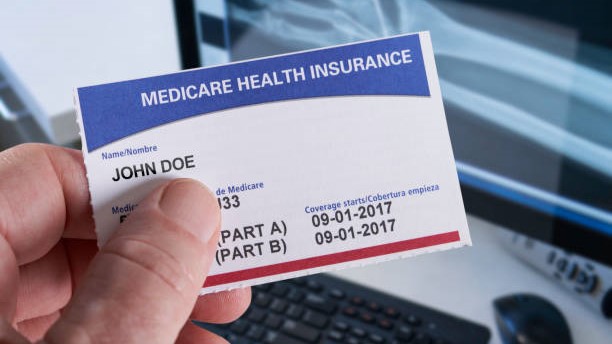When it comes to Medicare, things can quickly get confusing. What is Medicare? Am I eligible? How and when should I enroll? What are the different types of coverage?
These are all important questions and knowing the basics can go a long way in helping you make better decisions when the time comes to enroll, so let’s take a look at what you need to know.
What is Medicare?
Medicare is a federal program that provides health insurance to those over the age of 65, as well as certain individuals under 65 with disabilities.
The goal of Medicare is to provide health insurance coverage to eligible individuals (called ‘beneficiaries’) regardless of income, medical history, or health status. In 2020, Medicare covered over 62 million beneficiaries in the U.S. including 54 million aged 65 and older.
Medicare should not be confused with Medicaid, which is a federal and state program that helps with medical costs for those with limited income and resources.
Original Medicare (Part A & B)
Traditionally, Medicare coverage consists of two parts. These are known as ‘Original Medicare’:
- Medicare Part A (Hospital Insurance): which covers inpatient hospital care, surgery, lab tests, short-term skilled nursing facilities, home health care as well as hospice care
- Medicare Part B (Medical Insurance): which covers medically necessary doctor and outpatient medical services and supplies. Part B also covers ambulance services, durable medical equipment, hospice care, home health care and certain preventive services and screenings
It’s important to understand that Original Medicare does not pay for everything. Even when enrolled in Original Medicare, you are responsible for premiums as well as various out-of-pocket costs such as deductibles, copays, and coinsurance.
Medicare Part C, Part D, and Medicare Supplement
In addition to Original Medicare, there are various other parts of Medicare that are sold by private health insurance companies. These plans often act as:
- An alternate to Original Medicare such is the case with Medicare Advantage (also known as Part C coverage); OR
- Supplemental coverage that helps to cover some of the out-of-pocket costs that you may need to pay under Original Medicare in return for a monthly premium. These include standalone Prescription Drug Plans (also known as Part D plans) as well as Medicare Supplement plans (also known as ‘Medigap’)
We will describe these in more detail at the end of this article.
Who is eligible for Medicare?
Medicare eligibility for individuals 65 and over
You are eligible to enroll in Medicare Part A and B if you are:
- Over the age 65 and a U.S. citizen; OR
- A permanent resident who has been living in the U.S. constantly for the past 5 years
Most people are eligible for premium-free Part A coverage and do not have to pay premiums in order to be covered under Part A. However, for Part B coverage, all Medicare beneficiaries must pay premiums in order to be covered.
The premium for Part B is set by the Centers for Medicare and Medicaid Services (CMS) each year. What you pay will depend on your income filed with the IRS from 2 years ago. In 2023, the standard Part B premium is $164.90 per month for all individuals with income below $97,000 (or $194,000 for those that filed jointly) on their tax return from 2 years ago (2021 tax year).
| Eligibility for premium-free Part A Most people are eligible to receive Part A coverage without needing to pay a premium. If you or your spouse have worked and paid Medicare taxes for at least 10 years (40 quarters) you are eligible to receive premium-free Part A. If you or your spouse did not pay Medicare taxes for this period, you will have to purchase Part A coverage.Even if you are eligible for premium-free Part A you will still have out-of-pocket costs in the form of deductibles, copays, and coinsurance obligations. |
Premiums for Part B (and Part A if applicable) are typically deducted monthly from your Social Security payments. If you do not currently receive Social Security payments but are enrolled in Medicare, you will receive a bill for your premium every 3 months.
Medicare eligibility for individuals under 65
Individuals who are under the age of 65 with disabilities may also qualify for Medicare. These include:
- Social Security Disability Benefits: Individuals who have received SSD benefits for at least 24 months
- End-Stage Renal Disease (ESRD): Individuals that have ESRD (permanent kidney failure requiring dialysis or transplant). Benefits will typically begin on the first day of the fourth month of dialysis treatments
- Amyotrophic Lateral Sclerosis (ALS): Individuals with ALS (also known as Lou Gehrig’s disease). Benefits will typically begin as soon as you start receiving SSD benefits
When can I enroll in Medicare?
Automatic Enrollment
Depending on your current situation you may automatically be enrolled in Medicare:
- If you are turning 65 and have been receiving Social Security payments at least 4 months prior to being eligible for Medicare, you will automatically get Part A and B starting the first day of the month you turn 65. If your birthday lands on the first day of the month, then coverage will start the first day of the prior month. You will typically also receive your red, white, and blue Medicare card in the mail 3 months before your 65th birthday
- If you are turning 65 and not receiving Social Security: you will need to proactively sign up for Medicare during your Initial Enrollment Period (described below) by contacting the Social Security Administration. This includes anyone who has not been receiving Social Security for at least 4 months prior to being eligible for Medicare
- If you are under 65 and have a disability: you will automatically get Part A and B after you have received disability benefits from Social Security Disability Income for 24 months (unless you have ESRD or ALS)
How to Enroll in Medicare
The Social Security Administration (SSA) is in charge of processing enrollment applications for Original Medicare (Part A and B) and overseeing premiums and penalties.
If you are not receiving Social Security and automatically enrolled in Medicare, you can apply for Part A and B coverage through the Social Security Administration website: ssa.gov/benefits/medicare.
Medicare Enrollment Periods
Initial Enrollment Period
If you are turning 65, you have a 7-month ‘Initial Enrollment Period’ to sign up for Part A and/or Part B coverage.
The Initial Enrollment Period begins 3 months before the month you turn 65, includes the month you turn 65 and ends 3 months after the month you turn 65.
If you sign up for Medicare Part A and/or Part B before the month in which you turn 65, your coverage will start on the first day of the month you turn 65 (except if your birthday lands exactly on the first day of the month in which case your coverage starts the first day of the prior month).
Enrolling either in the month of your birthday or after will result in delays in the commencement of coverage by up to 3 months from the date that you sign up.
General Enrollment Period
If you happen to miss your Initial Enrollment Period, you do get another chance to enroll for Medicare Parts A and B between January 1 and March 31 each year (called the ‘General Enrollment Period’). However, if you enroll during this period, your Medicare coverage will begin on July 1 of the same year.
Other Medicare enrollment periods that you should know
There are other ‘enrollment periods’ that you should be aware of once you start receiving Medicare coverage:
- Annual Election Period: Every year, Medicare’s annual open enrollment period is October 15 – December 7. During this period, all existing Medicare beneficiaries are allowed to freely switch between different Medicare coverage if they decide to change or update their coverage options.
- Special Enrollment Periods: Once you are enrolled in Medicare, most beneficiaries will be unable to switch plans outside of the Annual Election Period unless they experience a ‘qualifying event’. Qualifying events may include things such as a permanent change of address, losing employer coverage or ceasing to work, gaining or losing Medicaid eligibility or if you begin experiencing a severe chronic condition.
For more information on all the different enrollments periods, refer to our article on Medicare Enrollment Periods.
When should I enroll in Medicare?
Should I enroll immediately when I turn 65?
If you are turning 65, it is recommended that you enroll in both Medicare Part A and B during your Initial Enrollment Period to avoid any penalties if any of these situations apply to you:
- You receive health insurance from you or your spouse’s employer and that employer has fewer than 20 employees
- You are currently using COBRA or retiree insurance from a previous job
- You are enrolled in individual health insurance plan such as an ACA plan
- You rely on short-term insurance, or have no insurance at all
- You have VA health coverage
- You have TRICARE coverage and are retired
What happens if I’m 65 and still receiving insurance from my employer (or spouse’s employer)?
In general, if the employer providing coverage has 20 or more employees, you can choose to delay your Medicare Part A and B enrollment without any penalties. You may also choose to cancel your employer coverage to use Medicare instead, or have both Medicare and employer coverage at the same time.
For more information on how to manage Medicare alongside employer-provided insurance, refer to our article on Medicare When Working Past 65.
Note that COBRA or other employer-sponsored retiree insurance does not qualify you for Part A and B deferral without penalties. You or your spouse must be working in order to defer enrollment
What happens if I don’t enroll in Medicare when I am eligible?
Medicare Late Enrollment Penalties
If you choose to not enroll in Part A and B when you are first eligible and do not qualify for deferred enrollment, you may be subject to late enrollment penalties when you subsequently decide to enroll in Medicare later. The penalties for delayed enrollment include:
- Part A Penalties: If you don’t qualify for premium-free Part A and don’t buy it when you’re first eligible, your monthly premium may go up 10% and you will have to pay the higher premium for twice the number of years you could’ve had Part A, but didn’t sign up
- Part B Penalties: If you didn’t get Part B when you were first eligible and did not qualify for deferral, your monthly premium may go up 10% for each 12-month period you could’ve had Part B but didn’t sign up. In most cases, you’ll have to pay this penalty each time you pay your premiums, for as long as you have Part B
What is Medicare Part A, B, C, D, and Medicare Supplement?
Original Medicare
As mentioned at the beginning of this article, traditional Medicare coverage consists of Part A and B coverage and is called ‘Original Medicare’:
Part A (Hospital Insurance):
Part A generally helps pay for care you receive when you are officially admitted as an inpatient to a hospital or skilled nursing facility subsequent to a qualifying hospital stay and for medically necessary purposes. Part A does not cover emergency room visits or situations where you are in the hospital for observation if you are not officially admitted as an ‘inpatient’ – these costs are instead covered under Part B.
Most people are eligible for premium-free Part A if you have worked and paid Medicare taxes for more than 10 years. Deductibles, copay and coinsurance out-of-pocket costs will still apply even if you are eligible for premium-free Part A. In 2023, the Part A inpatient hospital deductible that beneficiaries will pay when admitted to the hospital is $1,600 for each benefit period and covers the first 60 days of your stay.
Part B (Medical Insurance):
Medicare Part B helps pay for care when you are an outpatient. This could include regular doctor visits, emergency room visits, and most other routine and emergency medical services as well as durable medical equipment, home health care, and some preventive services.
The standard Part B premium amount in 2023 is $164.90 per month. Most people pay the standard Part B premium amount, however, if your income as reported on your IRS tax return from 2 years ago is above $97,000 individually or $194,000 jointly your premium will be higher.
There is also a $226 deductible and 20% coinsurance obligation after you reach the deductible.
Medicare Part C, Part D, and Medicare Supplement
In addition to Original Medicare which is provided directly by the federal government, Medicare also includes Part C (Medicare Advantage), Part D (Prescription Drugs Plans), and Medicare Supplement (Medigap) coverage. These are alternate or supplemental coverage options to Original Medicare that are provided by private health insurance companies:
Medicare Part C (Medicare Advantage):
Medicare Advantage is privatized Medicare, which means it’s offered by private health insurance companies that are contracted by the government to deliver Medicare.
Medicare Advantage is a bundled ‘all-in-one’ alternative to Original Medicare and combines everything you get in Part A and B, usually with added benefits like prescription drug coverage, dental, vision, and wellness perks. Medicare Advantage is usually managed care plans (for example, HMO and PPO) and have become more popular because of the additional benefits often included that Original Medicare does not have.
Once you are enrolled in Medicare Advantage, you will be required to use services in accordance with that plan’s policy, such as the use of ‘in-network’ providers to receive care.
Medicare Part D (Prescription Drug Coverage):
Part D refers to prescription drug coverage offered by private health insurance companies and available to everyone who is eligible for Part A or B. Prescription coverage can be purchased as a standalone Prescription Drug Plan (PDP) that is used as supplemental coverage alongside Original Medicare.
Prescription drug coverage can also be accessed via a Medicare Advantage plan that includes prescription drugs as a part of the plan (these are also known as ‘MA-PD’ plans).
Medicare Supplemental Insurance (Medigap):
Medicare Supplement is supplemental insurance that helps cover “gaps” in Original Medicare and is sold by health private insurance companies. Medicare Supplement can only be used with Original Medicare and you can not enroll in a Medicare Supplement plan if you are enrolled in a Medicare Advantage plan.
A Medicare Supplement policy is designed to help cover out-of-pocket costs (deductibles, copays and coinsurance) that you otherwise may be responsible to pay under Original Medicare in return for a monthly premium.
There are 10 Medicare Supplement plans (A, B, C, D, F, G, K, L, M & N) in most states and by law, Medicare Supplement plans are standardized. This means Plan G from Company A has exactly the same benefits as Plan G from Company B – therefore your choice comes down to price and the insurer’s reputation
Final Words
There are many pieces to Medicare. This article provides you the basics so you can understand the key factors that you need to think about as you begin to plan for both Medicare enrollment. There are other considerations not covered in this article and you should read CoverRight’s comprehensive guides to Part A, Part B, Part C, and Part D. You can also find more information on many other Medicare-related subjects through our other published articles.
At CoverRight, we’re here to help you find the right coverage that you deserve. Reach out today and start finding the right Medicare plan for you.










